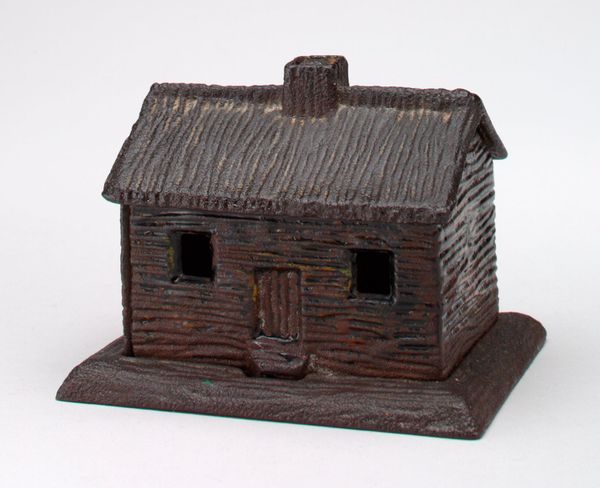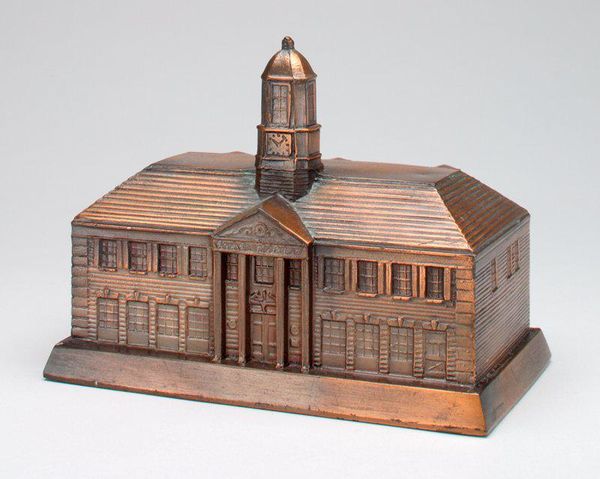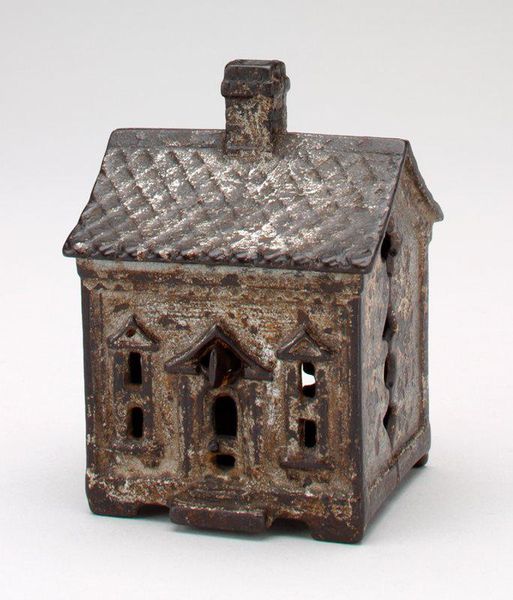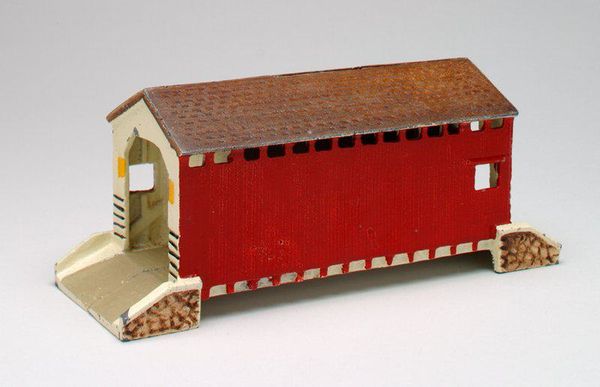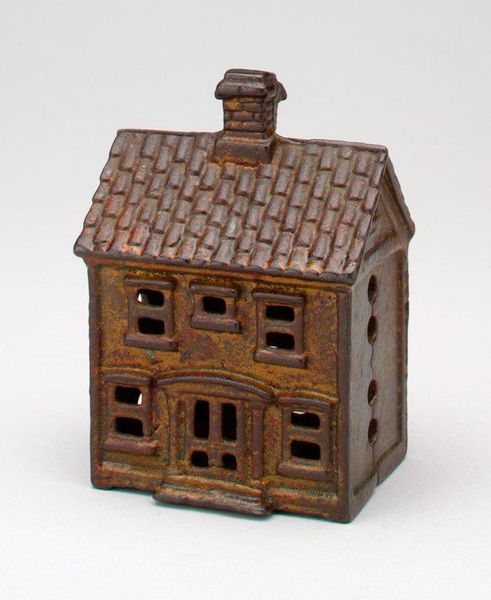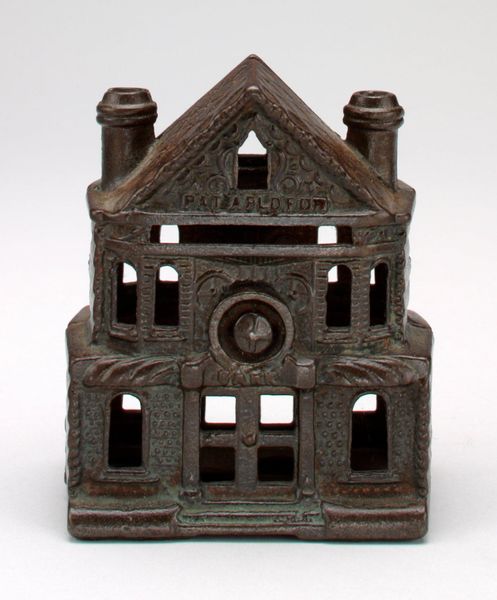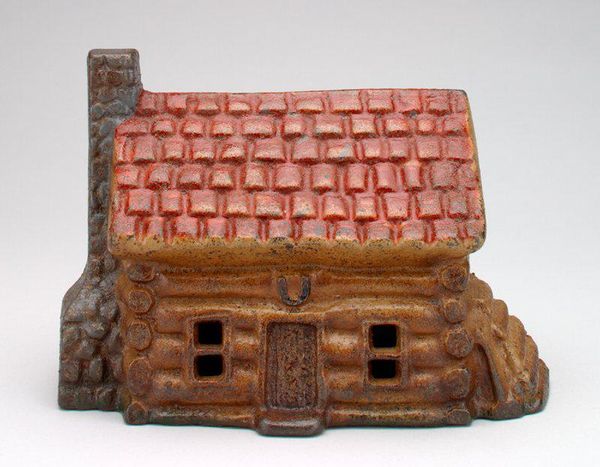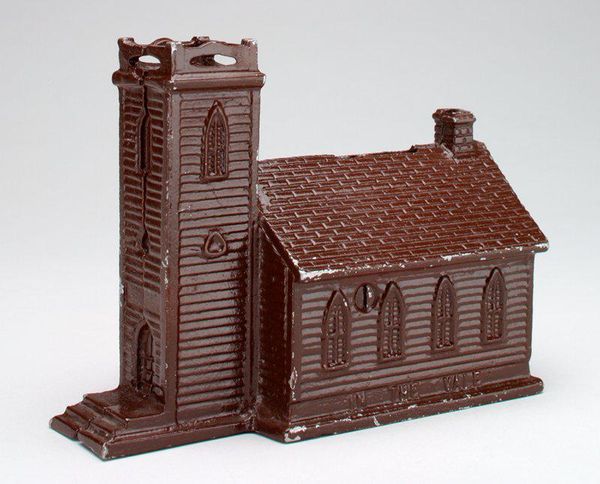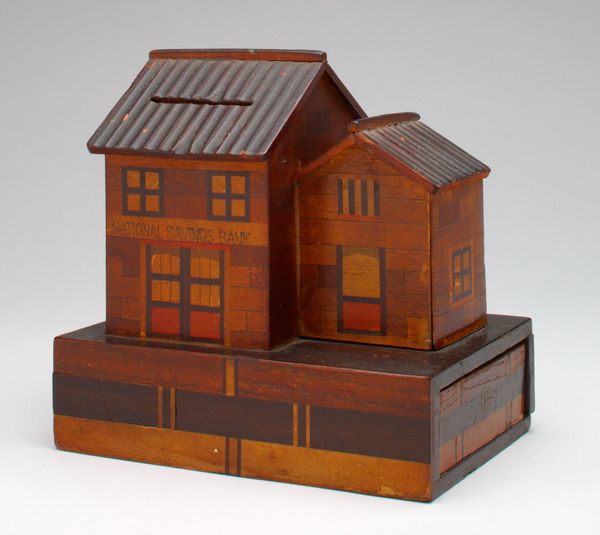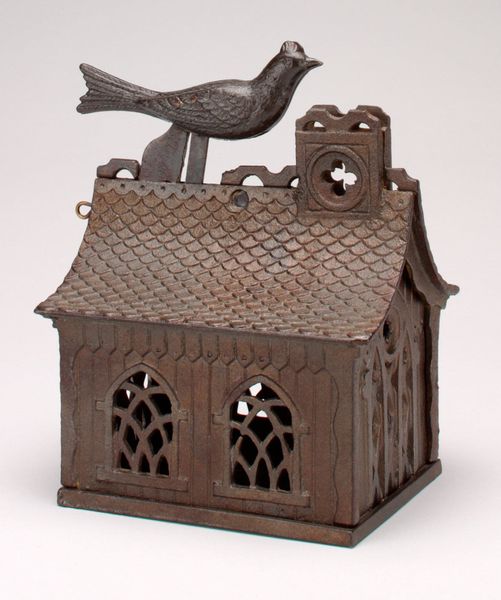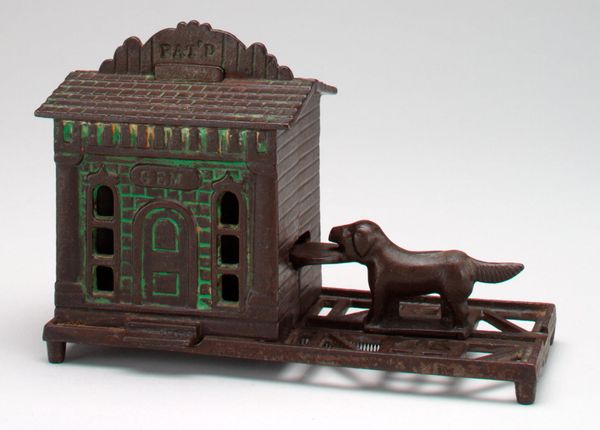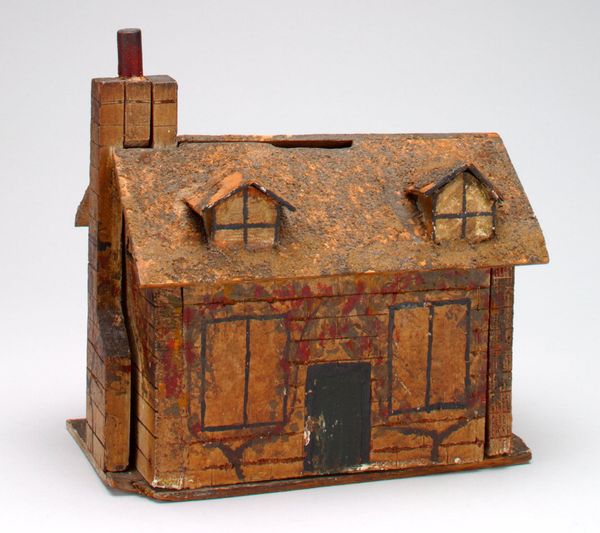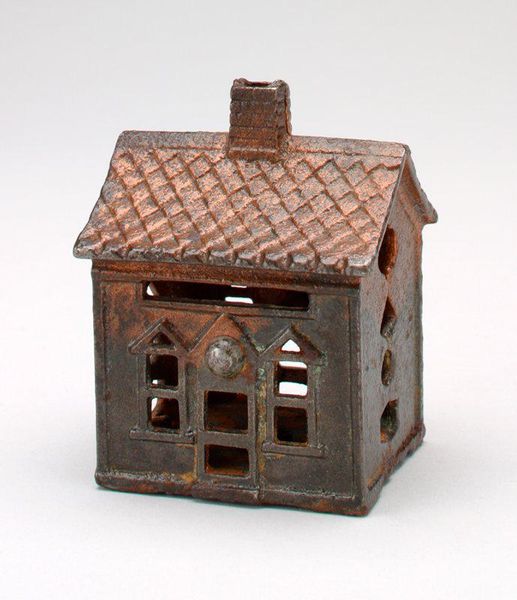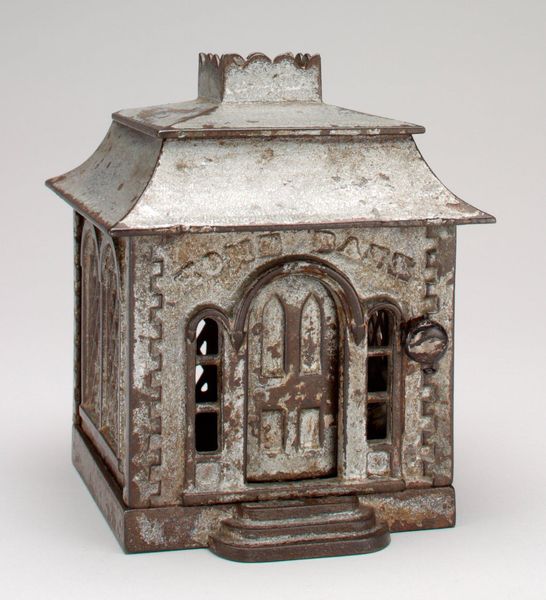
brass, sculpture, architecture
#
brass
#
sculpture
#
sculpture
#
miniature
#
architecture
Dimensions: 3 7/8 x 9 1/4 x 6 in. (9.84 x 23.5 x 15.24 cm)
Copyright: Public Domain
Curator: Right in front of us we have an interesting piece, a so-called -Churchyard- still bank, made sometime in the late 19th century. It seems to be a brass miniature of a church, complete with its surrounding walls. Editor: My first thought? Cozy desolation. It’s oddly charming in its austerity. The repetitive brickwork makes me feel like I'm in some quiet corner of Yorkshire on a cloudy day. Curator: Exactly! What is intriguing is to think about what purpose this artwork serves, and also, in which ways this brass replica of the sacred architecture might function as some sort of political or economic commentary. It sits somewhere between devotion and... accumulation. Editor: Well, you know, historically the church often legitimized the very structures of power and wealth accumulation it purported to transcend. To put it bluntly: tithing. Maybe this bank is an innocent plaything, but maybe it also holds a mirror to that uneasy relationship. Curator: Yes, and also thinking about the form factor... it looks like it is a sort of model. I like how there's no distinction in terms of texture, all built with the same brass blocks. Editor: I'm struck by its materiality, the muted sheen of the brass almost feels like a melancholic photograph. What's fascinating here, too, is the erasure of detail – everything simplified, standardized into these repetitive forms. It drains the spirituality of the church. Curator: Good point! Also the absence of life. No trees, no humans... This brass world feels suspended, preserved in its metallic shell for perpetuity. Like one of these melancholic 19th century poems by Matthew Arnold! Editor: Definitely evokes a sense of time standing still... yet, its very function anticipates a future accumulation. The pennies drop in, the future happens slowly. In a way it embodies how institutions often mediate between past, present, and the future of power structures. Curator: Perhaps its creator felt a bit conflicted or simply fascinated about how economy, religion, architecture and miniature production came together. That to me is more interesting than whatever moral message the author would want to express... if any! Editor: A point well taken. I see the piece today through a completely different lens, imagining it not just as architectural mimesis but as a little commentary on those complex societal configurations. Curator: Right? Sometimes the best pieces are the ones that have no hidden messages or a profound statement, but can rather incite speculation through careful formal crafting!
Comments
No comments
Be the first to comment and join the conversation on the ultimate creative platform.
